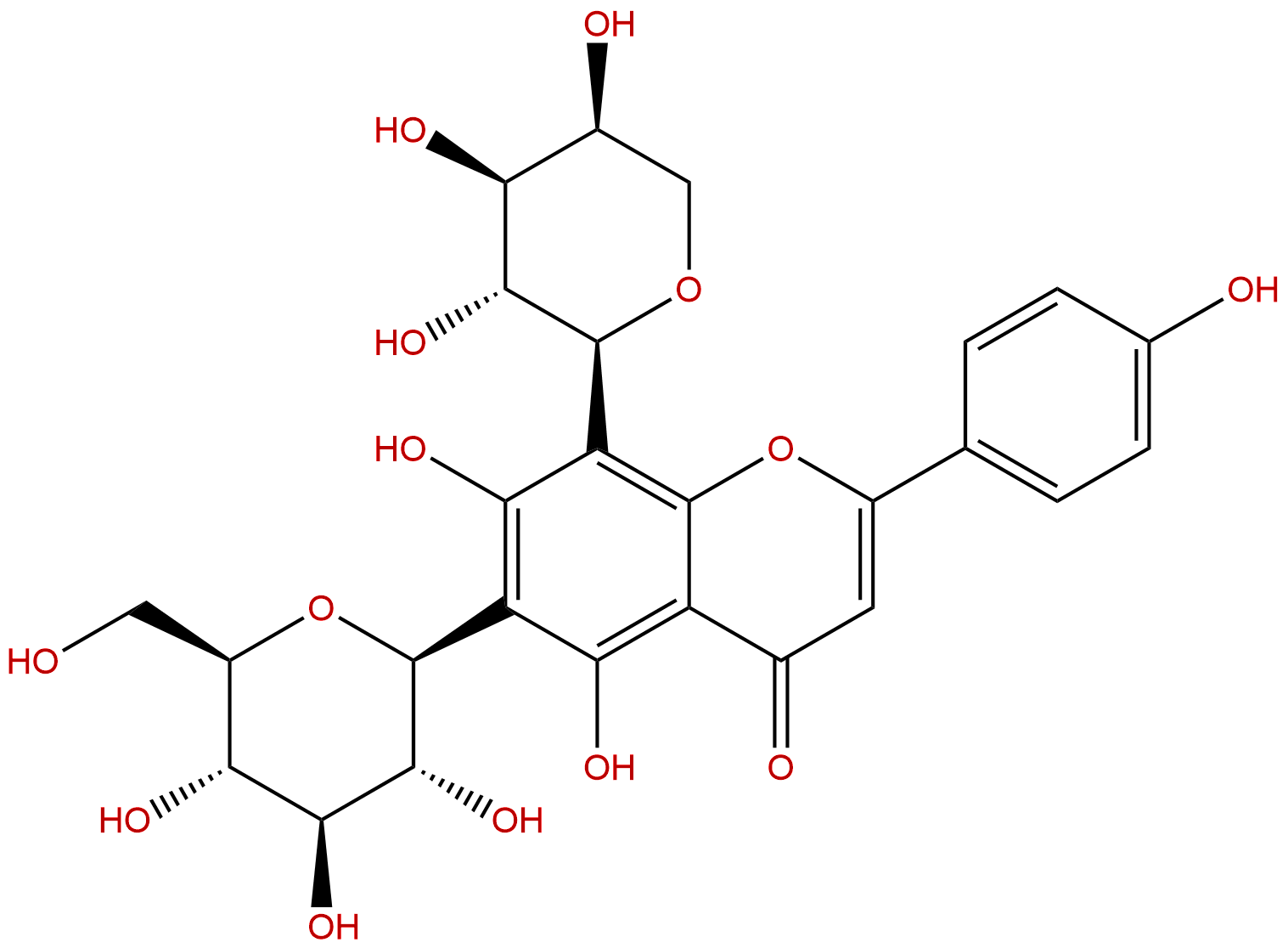
SchaftosideCAS No.:51938-32-0
|
||||||||||
 |
|
|
||||||||

| Catalogue No.: | BP1260 |
| Formula: | C26H28O14 |
| Mol Weight: | 564.496 |
Product name: Schaftoside
Synonym name:
Catalogue No.: BP1260
Cas No.: 51938-32-0
Formula: C26H28O14
Mol Weight: 564.496
Botanical Source: Desmodii styracifolii herba
Physical Description:
Type of Compound: Flavonoids
Purity: 95%~99%
Analysis Method: HPLC-DAD or/and HPLC-ELSD
Identification Method: Mass, NMR
Packing: Brown vial or HDPE plastic bottle
The product could be supplied from milligrams to grams
Inquire for bulk scale.
Description:
Schaftoside has antioxidant activity, it also can inhibit phospholipase, lipoxygenase and cyclooxygenase, three pro-inflammatory enzymes.
References:
J Chromatogr B Analyt Technol Biomed Life Sci. 2013 Aug 1;932:66-73.
Simultaneous determination of four flavonoids and one phenolic acid in rat plasma by LC-MS/MS and its application to a pharmacokinetic study after oral administration of the Herba Desmodii Styracifolii extract
METHODS AND RESULTS:
A sensitive and selective liquid chromatography and tandem mass spectrometry (LC-MS/MS) method was developed and validated for the simultaneous determination of four flavonoids (Schaftoside, isovitexin, luteolin, and apigenin) and one phenolic acid (ferulic acid) in rat plasma using sulfamethoxazole as the internal standard (IS). The separation was performed using a Diamonsil C18 column, which was eluted with methanol (A) and 0.1‰ acetic acid (B). The gradient condition was as follows: 0-5min, 40-60% A; 5-6min, 60-95% A; and 6-10min, maintained at 95% A. The analytes were detected using a hybrid quadrupole linear ion trap mass spectrometer that was equipped with an electrospray ionization source in the negative ion and multiple-reaction monitoring modes. A full validation of the method was performed. The linearity of the analytical response was good, with correlation coefficients greater than 0.9925 for all of the compounds within the concentration range. The lower limits of quantitation (LLOQ) of Schaftoside, isovitexin, luteolin, apigenin, and ferulic acid in rat plasma were 1.66, 0.84, 3.69, 1.70, and 3.91ng/mL, respectively. The intra-day and inter-day precisions of the investigated components exhibited an RSD within 13.20%, and the accuracy (RE%) ranged from -8.47% to 10.90%.
CONCLUSIONS:
The results indicated that the developed method is sufficiently reliable for the pharmacokinetic study of Schaftoside, isovitexin, apigenin, luteolin, and ferulic acid in rats following oral administration of the Herba Desmodii Styracifolii extract.
Zuckerindustrie Sugar Industry, 2015, 140(10):632-639.
An HPLC-DPPH method for antioxidant activity from sugarcane molasses.
Sugarcane molasses is potentially rich in health-promoting phenolic compounds. Present study was designed to optimize experimental conditions for ultrasonic-assisted extraction of antioxidant compounds from sugarcane molasses using response surface methodology.
METHODS AND RESULTS:
An HPLCDPPH method for simultaneous determination of antioxidant activity was also developed. Ethanol concentration 80-84% (v/v), temperature 58-59 degrees C, and 47-50 min time duration were the most favorable conditions. In these conditions, the optimal experimental results were total phenolic content 18 mg gallic acid equivalents/g, with DPPH free radical scavenging ability of 92%, which was same as the predicted values by RSM model. Catechin, vanillic acid, isorhamnetin-3-O-glucoside, eugenol, Schaftoside, diosmetin-7-O-beta-D-glucopyranoside, ferulic acid, and caffeoylquinic acid were identified using HPLC-MS/MS. Among the antioxidant compounds, Schaftoside was the most abundant antioxidant (92.081 mu g/g dry substance), while ferulic acid exhibited the highest antioxidant activity.
CONCLUSIONS:
These results suggest that HPLC-DPPH method is more specific, accurate and less time consuming and can sever as a quality control tool.